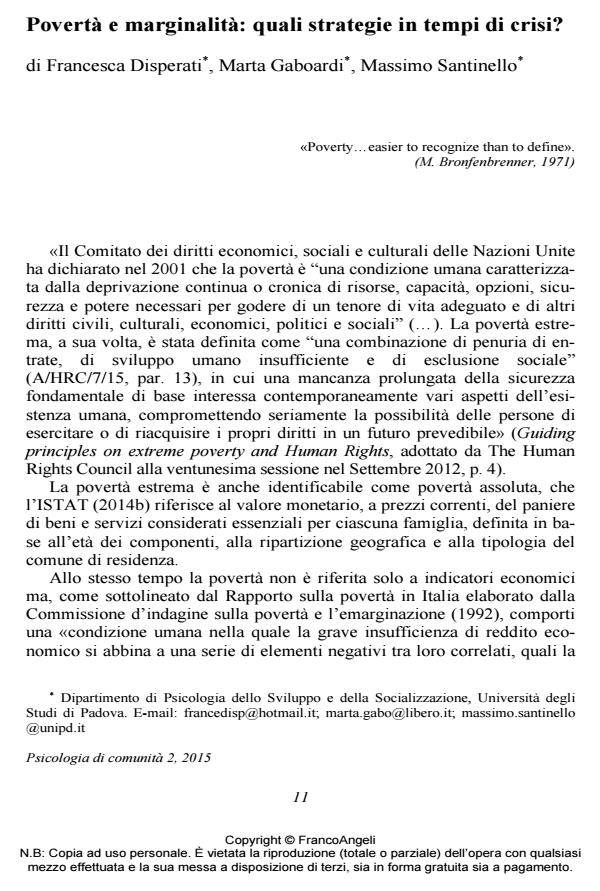Povertà e marginalità: quali strategie in tempi di crisi?
Titolo Rivista PSICOLOGIA DI COMUNITA’
Autori/Curatori Francesca Disperati, Marta Gaboardi, Massimo Santinello
Anno di pubblicazione 2015 Fascicolo 2015/2
Lingua Italiano Numero pagine 12 P. 11-22 Dimensione file 51 KB
DOI 10.3280/PSC2015-002002
Il DOI è il codice a barre della proprietà intellettuale: per saperne di più
clicca qui
Qui sotto puoi vedere in anteprima la prima pagina di questo articolo.
Se questo articolo ti interessa, lo puoi acquistare (e scaricare in formato pdf) seguendo le facili indicazioni per acquistare il download credit. Acquista Download Credits per scaricare questo Articolo in formato PDF

FrancoAngeli è membro della Publishers International Linking Association, Inc (PILA)associazione indipendente e non profit per facilitare (attraverso i servizi tecnologici implementati da CrossRef.org) l’accesso degli studiosi ai contenuti digitali nelle pubblicazioni professionali e scientifiche
L’articolo si pone l’obiettivo di evidenziare la difficoltà di definire in modo univoco la povertà. Dopo una sintetica introduzione sulla diffusione del fenomeno in Europa e in Italia, vengono analizzate le diverse conseguenze che comporta sul benessere degli adulti e dei minori. Inoltre, viene introdotto il tema della marginalità estrema e in particolare di chi vive la condizione definita come senza dimora. Infine sono discusse le principali strategie, coerenti con un’ottica di psicologia di comunità, volte a favorire un percorso di reinserimento sociale.
Parole chiave:Povertà, marginalità estrema, strategie d’intervento di comunità.
- Uno studio di caso sui senza dimora: profili, caratteristiche e interazione fra le problematiche Francesco Balducci, Tatiana Saruis, in SOCIOLOGIA E POLITICHE SOCIALI 2/2017 pp.141
DOI: 10.3280/SP2017-002008
Francesca Disperati, Marta Gaboardi, Massimo Santinello, Povertà e marginalità: quali strategie in tempi di crisi? in "PSICOLOGIA DI COMUNITA’" 2/2015, pp 11-22, DOI: 10.3280/PSC2015-002002